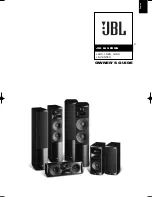
To solve this dilemma, the company undertook development
of custom (and rather radical) DSP algorithms specifically
engineered to provide the required filters for correcting
loudspeaker anomalies. The resulting filters had to possess the
required precision and accuracy in both the frequency and time
domain. At the same time, any uncorrectable anomalies would
have to be ignored by the filters.
This advanced processing, now called Gunness Focusing, cannot
be applied “as is” to just any loudspeaker, let alone be something
that even the most astute of users can set up. The anomalies and
resonance problems cured by Gunness Focusing are very specific
to each loudspeaker design.
Thus, the internal physical details must be known, the anomalies
must be carefully analyzed, with appropriate filters custom
designed by EAW and implemented via the UX8800 processor –
or, in the case of the NTL720, it’s incorporated within the system.
CONTROL & MUCH MORE
EAWPilot control software provides comprehensive DSP control
as well as monitoring of amplifier status for each NTL720 module
in an array. And it does much, much more. When connected, all
loudspeakers in the audio system comprise a network in which
EAWPilot recognizes each individual loudspeaker as well as
arrays of loudspeakers acting as a single unit.
The roots of this software package stem from the KF900 project’s
optimization program, FChart, which uses high-resolution
measurements of each individual driver in an array to predict and
optimize total array performance. EAWPilot employs this same
approach to control multiple loudspeakers in a total system
environment.
Not only does EAWPilot assist in optimizing a wide range of
loudspeaker and array parameters, but its Wizard modeling
software helps in automatically configuring array DSP for optimal
performance fitting specific audience areas, greatly simplifying
system setup and alignment. This even extends to providing
the user with input on building optimum array structures and
selecting correct pickpoints on the array flybars for a given array
configuration. (
Figure 7
)
Input selection provided on NTL720 cabinets is both simple
and flexible – the user has a choice of analog, AES left/right, and
EAW’s proprietary U-Net. Drawn from the UX8800 and other EAW
products, U-Net provides full digital control of each device in a
system, including audio signal, processing parameters, routing –
in addition to accommodating EAW Smaart tuning and analysis
platform. (
Figure 8
)
Figure 6
Figure 7
Figure 8
























